10 Ways Transactional Data Drives Market Insights and Growth

10 Ways Transactional Data Drives Market Insights and Growth
Overview
The article examines the role of transactional data in driving market insights and growth. By enabling businesses to analyze consumer behavior, refine strategies, and enhance operational efficiency, transactional data serves as a crucial asset.
Organizations that leverage high-quality transactional data can make informed decisions, which ultimately leads to improved profitability and a competitive advantage in a rapidly evolving market.
How can your organization harness this data to stay ahead?
The examples provided demonstrate that those who effectively utilize transactional data are better positioned to adapt and thrive.
Introduction
Transactional data has emerged as the lifeblood of modern businesses, driving insights and strategies that shape market dynamics. By harnessing this data, organizations unlock a treasure trove of opportunities, from understanding consumer behavior to enhancing operational efficiency. However, as the landscape evolves, how can businesses effectively leverage transactional data to stay competitive and foster sustainable growth? This article explores ten compelling ways transactional data can be utilized to inform market insights and propel businesses forward in an increasingly data-driven world.
Initial Data Offering: Access Premium Transactional Data for Informed Analysis
Initial Data Offering (IDO) serves as a crucial asset for enterprises seeking high-quality transactional data. By offering access to meticulously curated datasets powered by advanced technologies like AI, IDO enables organizations to perform thorough analyses that inform strategic decisions. This emphasis on quality ensures that users can rely on the information for precise insights, ultimately enhancing their market positioning and competitive advantage. As Peter Sondergaard, Senior Vice President at Gartner, aptly puts it, "Information is the oil of the 21st century, and analytics is the combustion engine," highlighting the vital role of high-quality information in driving organizational success.
Effective applications of financial information analysis, as demonstrated in the case study 'Quality Over Quantity in Data Science,' reveal that companies equipped with high-quality insights can anticipate shifts in consumer behavior, refine their marketing strategies, and achieve sustainable growth. Moreover, as consumer habits evolve, the importance of high-quality exchange information will continue to rise, with organizations increasingly relying on accurate observations to navigate complex market dynamics and enhance their operations.
Utilizing AI-driven solutions, such as SavvyIQ's Recursive Data Engine, companies can derive deeper insights from consumer transactional data, thereby improving their strategic initiatives and fostering informed decision-making. How might your organization leverage these insights to drive success? The integration of high-quality data is not just beneficial; it is essential for maintaining a competitive edge in today's rapidly changing market landscape.
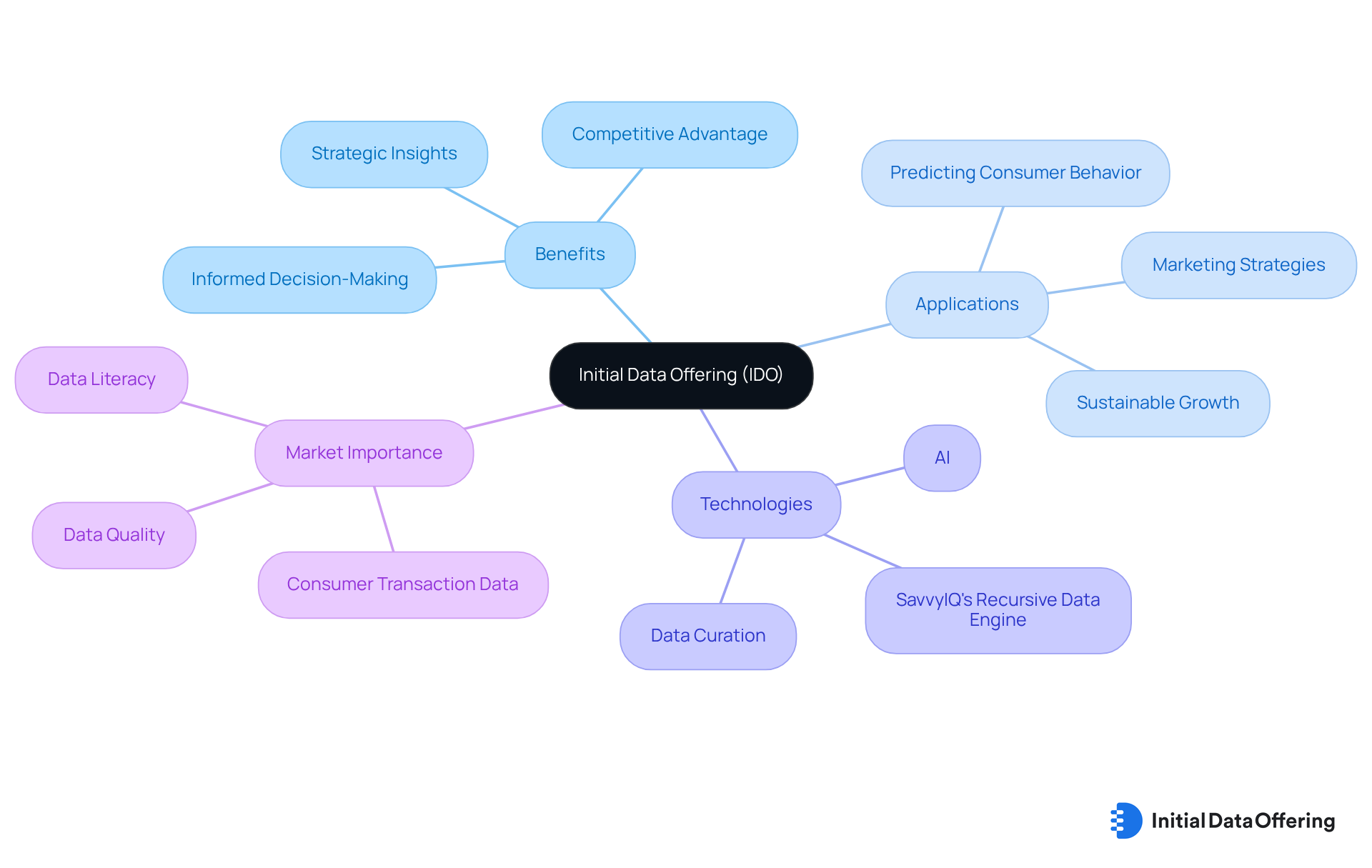
ACID Properties: Ensure Data Integrity in Transactional Systems
The integrity of transactional systems is essential for maintaining ACID properties—Atomicity, Consistency, Isolation, and Durability. These principles ensure that transactional data is processed reliably, preventing corruption and guaranteeing that analyses based on this information are trustworthy. For instance, in e-commerce order processing, the durability property ensures that once a transaction is committed, the transactional data remains in the database even in the event of a system crash, thereby safeguarding order retention. Similarly, the consistency property prevents invalid transactions, such as negative transactional data being recorded for an employee's salary, thus maintaining the database's integrity.
Businesses that prioritize ACID compliance can significantly enhance their decision-making processes through the analysis of transactional data. By ensuring that all related actions occur together—such as updates to transactional data in retail systems—companies can maintain precise information, which is crucial for strategic planning and operational efficiency. In areas such as healthcare, where regulatory standards like HIPAA require strict information integrity, ACID compliance is not only advantageous but essential for handling transactional data. As noted by Thuoc Nguyen, a Backend Developer, 'The ACID properties ensure that these transactional data maintain the database’s stability, even in cases of errors, system crashes, or other unexpected failures.'
Furthermore, information integrity specialists stress that upholding ACID characteristics is essential for avoiding corruption in transactional data, which can lead to expensive mistakes and misguided choices. As organizations increasingly rely on data-driven insights, the importance of ACID compliance for managing transactional data becomes even more pronounced, providing a competitive advantage in today's fast-paced market landscape. By cultivating a strong structure for information accuracy, companies can utilize financial records to propel growth and innovation. However, it is essential to recognize the complexities and challenges of maintaining ACID properties in real-world scenarios, as well as the potential trade-offs between performance and strict compliance. This nuanced understanding is crucial for enterprises aiming to balance reliability with operational efficiency.
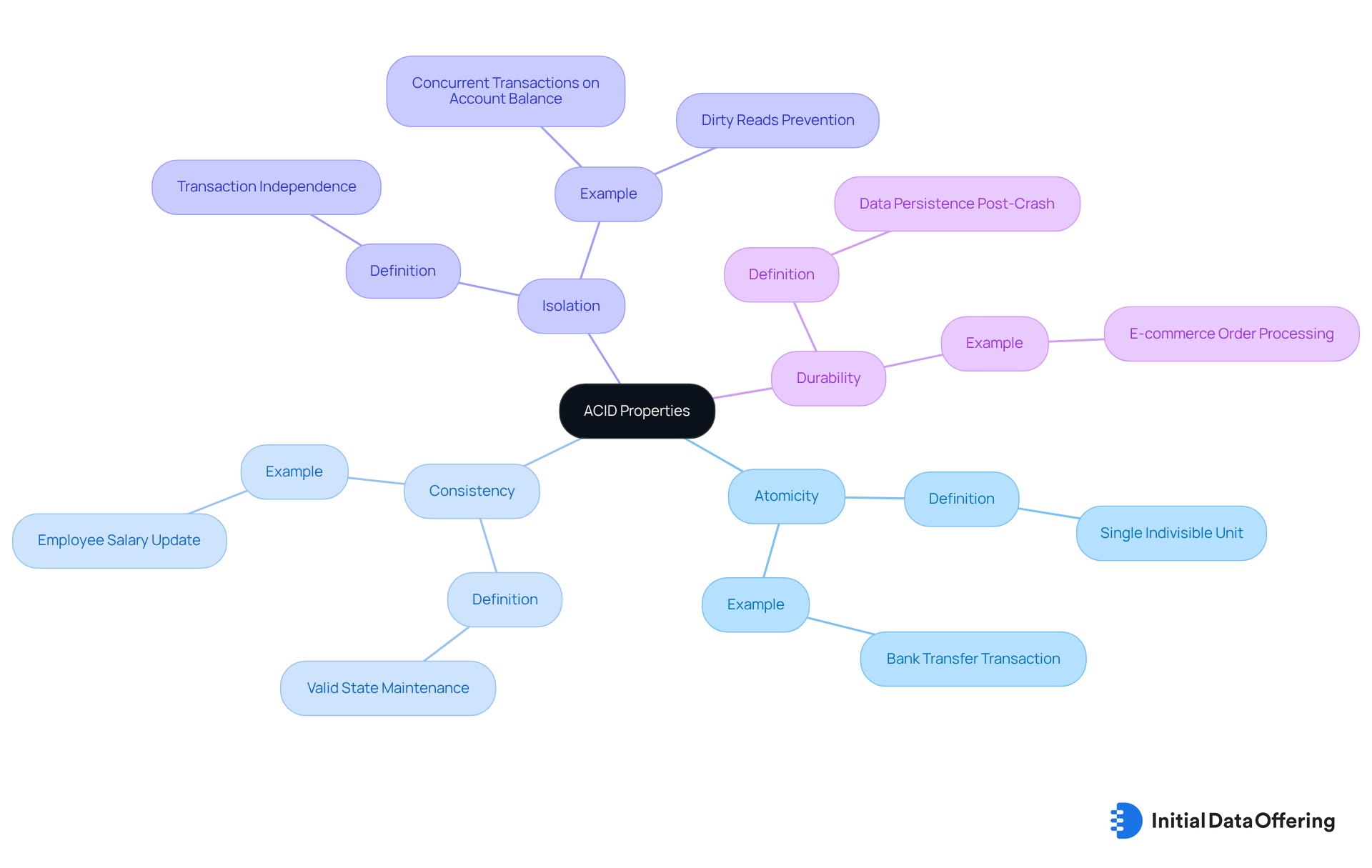
Trend Analysis: Leverage Transactional Data to Identify Consumer Behavior Patterns
By utilizing transactional data for trend analysis, companies can uncover valuable insights into consumer behavior patterns. This analysis not only helps organizations identify shifts in preferences but also enables them to adapt their offerings accordingly. For example, tracking purchasing trends over time can inform inventory management and marketing strategies, ultimately leading to increased customer satisfaction and loyalty. As 82% of marketers plan to enhance their use of first-party data, understanding consumer behavior through data-driven insights is more essential than ever.
Moreover, effective trend analysis can significantly improve inventory management, ensuring that companies maintain optimal stock levels and reduce waste. Companies like Airtel have successfully leveraged predictive insights to refine their market strategies, demonstrating the tangible benefits of data-driven approaches. As noted by industry experts, "Businesses who use data-driven strategies drive five to eight times as much ROI as businesses who don’t."
In an increasingly fragmented information marketplace, harnessing the power of transactional data insights allows companies to stay ahead of market trends and drive growth. How can your organization utilize these insights to enhance its strategies? By focusing on data-driven knowledge, companies can not only meet consumer demands but also foster long-term loyalty.
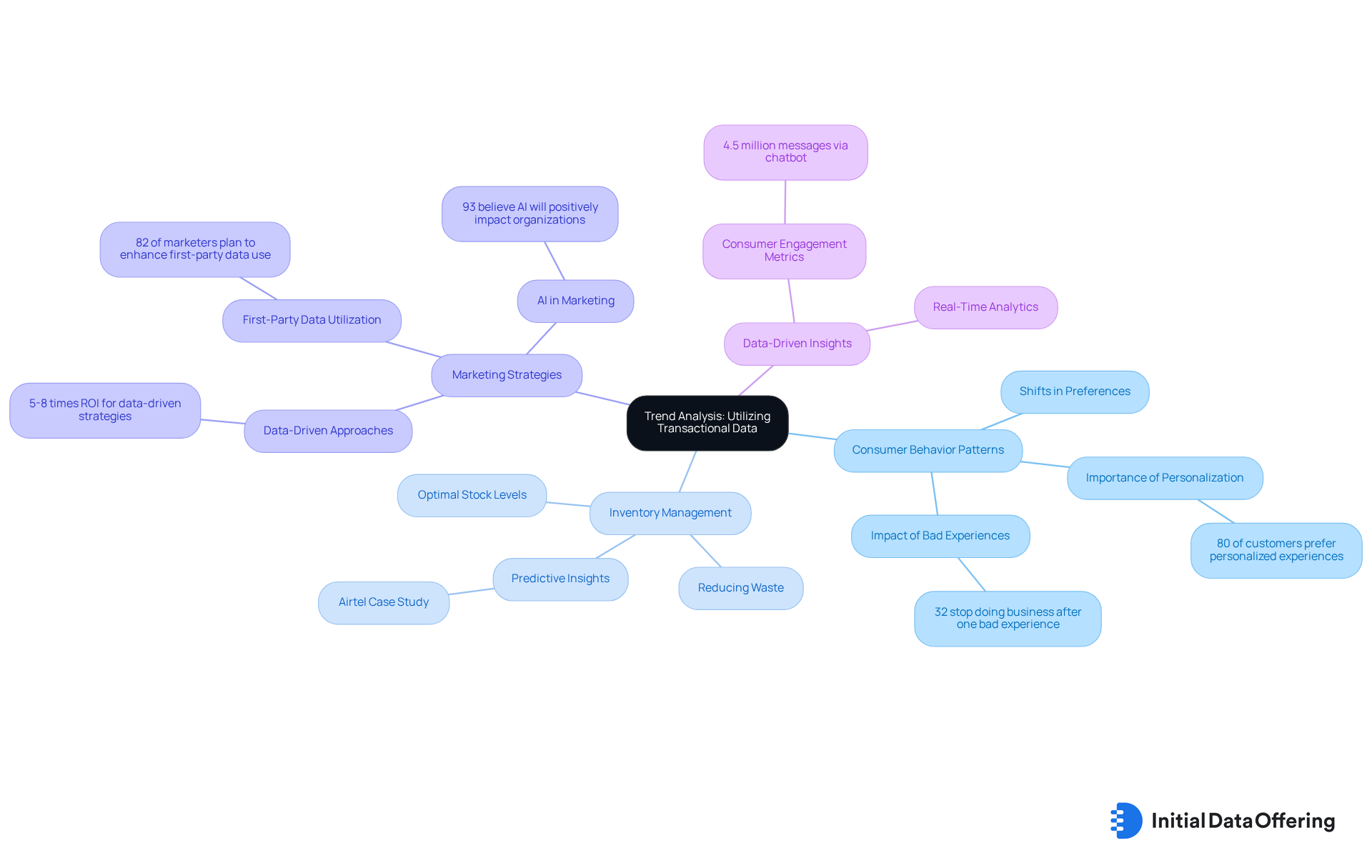
Data Management Challenges: Overcome Accuracy and Reliability Issues in Transactional Data
Transactional data often presents challenges related to accuracy and reliability. Companies must adopt strong information management practices to ensure that the information they depend on is reliable. This includes:
- Routine information audits
- Validation procedures
- The utilization of advanced analytics tools to identify and correct discrepancies
As Geoffrey Moore claims, information is essential for making informed corporate decisions. It allows companies to learn from previous performance and anticipate future trends. Furthermore, statistics show that only 20% of analytical findings result in business outcomes. This highlights the importance of efficient information management practices to ensure that findings lead to actionable results.
By overcoming these challenges, organizations can improve the quality of their understanding and make more informed decisions. Additionally, the user-friendly submission procedure provided by platforms such as Initial Information Offering (IDO) emphasizes the significance of accessibility in information handling. This can further enhance management efforts. Tackling these issues not only enhances information reliability but also reduces productivity loss resulting from time spent searching for information. Ultimately, this enables organizations to utilize transactional data for actionable insights and competitive advantage.
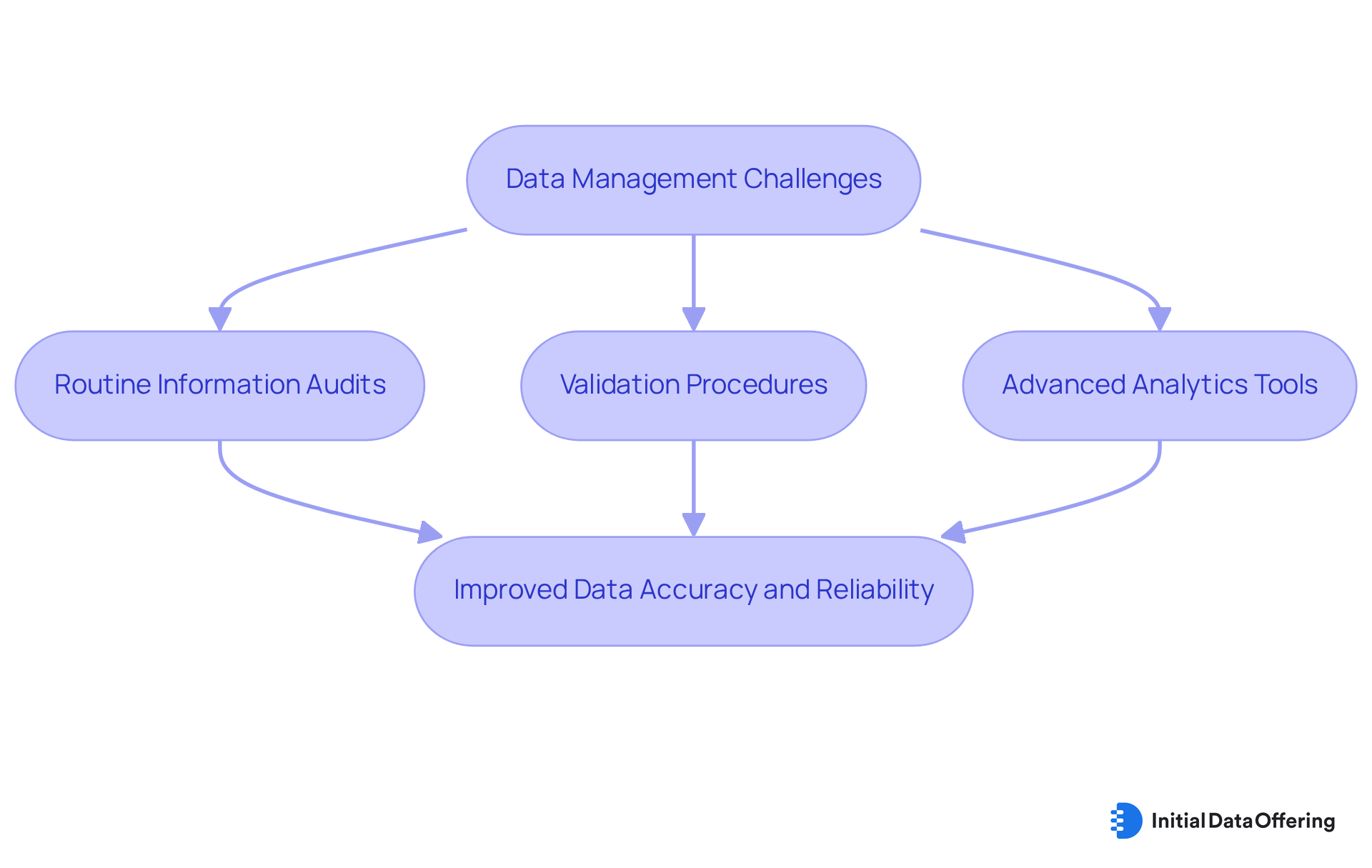
Transaction Rollback and Commit: Maintain Consistency in Data Operations
Transaction rollback and commit are essential processes that ensure consistency in information operations. The rollback feature allows companies to revert to an earlier state in case of mistakes, effectively protecting information integrity. On the other hand, the commit process finalizes transactions, ensuring that all changes are permanently saved. This dual mechanism is crucial for organizations aiming to handle their information efficiently, as it significantly minimizes the chance of errors.
Recent data indicates that operations lacking rollback mechanisms experience error rates that can compromise reliability. This underscores the necessity of implementing these processes. By adopting robust rollback and commit strategies, businesses can enhance the reliability of their analyses, leading to more informed decision-making and improved operational outcomes. As emphasized by information operations specialists, maintaining consistency in records is not merely about preventing errors; it is about fostering a culture of reliability that drives better insights and growth.
Furthermore, employing savepoints within transactions enables organizations to manage errors more effectively by allowing partial rollbacks. This capability reduces the impact of any issues that arise during operations. How can your organization leverage these processes to enhance reliability and decision-making? By understanding and implementing these strategies, businesses can create a resilient information environment that supports sustained growth and operational excellence.
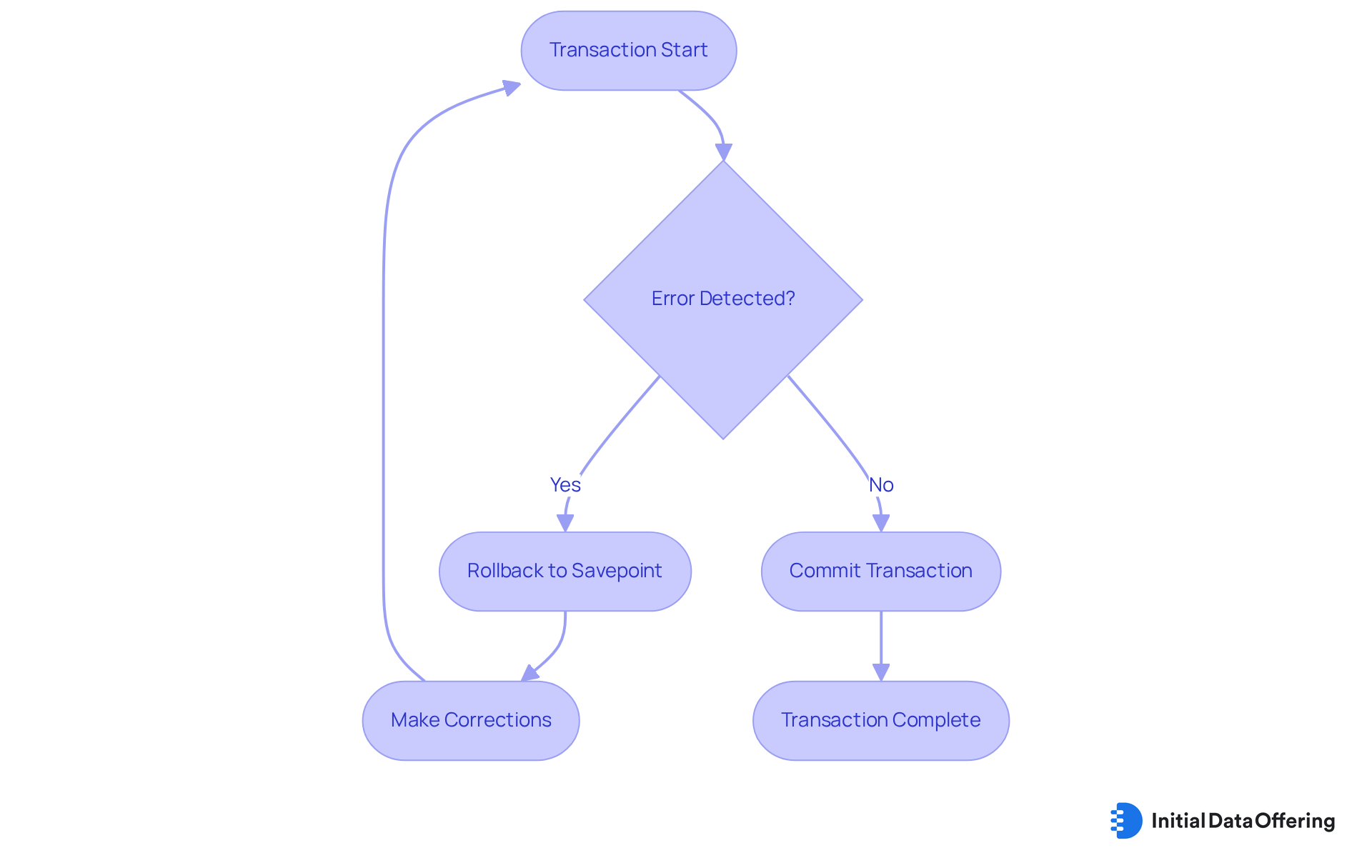
Industry Applications: Explore How Different Sectors Utilize Transactional Data
Transactional data plays a pivotal role across various sectors, including finance, retail, and healthcare. It drives operational efficiency and informed decision-making by utilizing transactional data. In finance, for instance, transactional data is crucial for fraud detection and risk evaluation. Large-scale analytics achieve an impressive accuracy rate of over 95% in recognizing fraudulent claims. This capability not only protects financial assets but also enhances trust in financial systems. As Trishita Deb observes, "Incorporating this unstructured information into conventional systems poses significant challenges, mainly in organization and standardization."
In the retail industry, companies utilize transactional data to enhance inventory control and boost customer interaction strategies. By analyzing transactional data related to purchasing patterns, retailers can forecast demand more accurately. This reduces excess inventory and enhances customer satisfaction through timely product availability. Companies that employ extensive analytics in their supply chain management report substantial decreases in operational expenses and waste, illustrating the tangible benefits of data-driven decision-making.
Healthcare also gains significantly from transactional data, utilizing it to enhance patient care. By combining information from electronic health records and IoMT devices, healthcare providers can monitor patient health in real-time. This facilitates timely interventions and reduces hospital visits, particularly for chronic condition management. Such an approach not only improves patient outcomes but also streamlines operational processes within healthcare facilities. Notably, the healthcare large-scale information market is expected to expand from USD 42.2 billion in 2023 to USD 145.8 billion by 2033, underscoring the significance of actionable insights obtained from operational information.
Industry leaders emphasize the transformative potential of exchange information. For instance, advancements in large-scale analytics and artificial intelligence are reshaping how organizations across various fields utilize information for strategic understanding. As the focus on practical insights derived from business information intensifies, it will stimulate innovation and expansion across industries. How might your organization leverage these insights to drive growth?
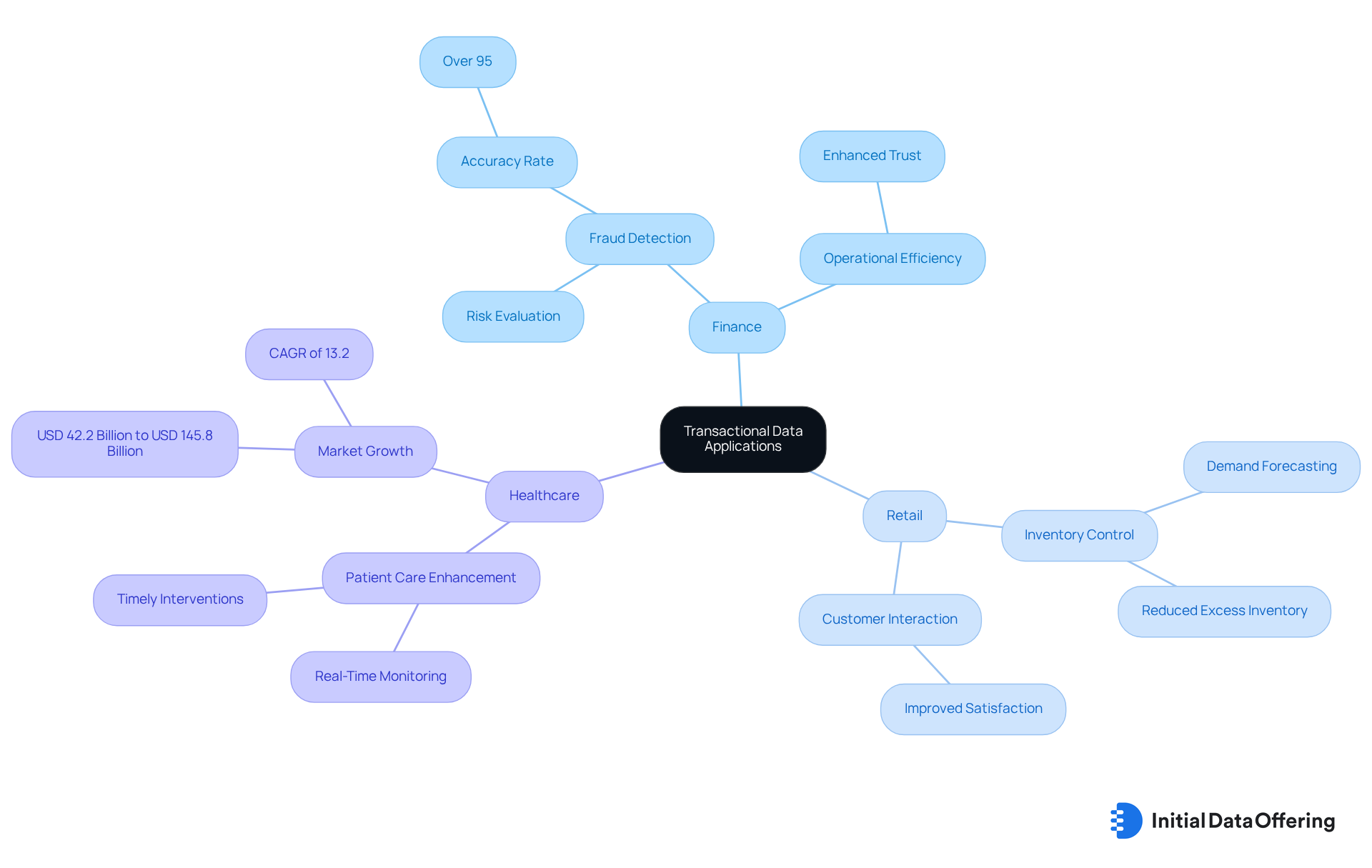
Best Practices: Optimize the Use of Transactional Data for Business Insights
To maximize the potential of transactional data, businesses must implement robust governance policies that establish clear guidelines for management and usage. This is essential for informed decision-making, as Sherlock Holmes famously stated, "theories without evidence are mere assumptions." Investing in advanced analytics tools not only enables a deeper understanding of data but also promotes a data-driven culture within the organization. Furthermore, Eric Schmidt highlights the importance of proficient information specialists who can transform extensive quantities of available information into valuable insights, emphasizing the necessity for skill in information management.
Regular training sessions on information analysis techniques empower staff to effectively interpret and leverage transactional data. Dean Abbott emphasizes that clear information is vital for effective governance, ensuring the reliability of the insights produced. Such initiatives enhance decision-making capabilities and drive improved business outcomes. As organizations increasingly recognize information as a strategic asset, the significance of effective governance policies becomes crucial in managing the complexities of information administration and ensuring compliance with evolving regulations.
Additionally, addressing the disjointed nature of the information marketplace is critical, underscoring the need for strong governance in today’s information environment. By establishing clear guidelines and investing in the necessary tools and training, businesses can harness the full potential of their transactional data, which ultimately leads to more informed decisions and better organizational performance.
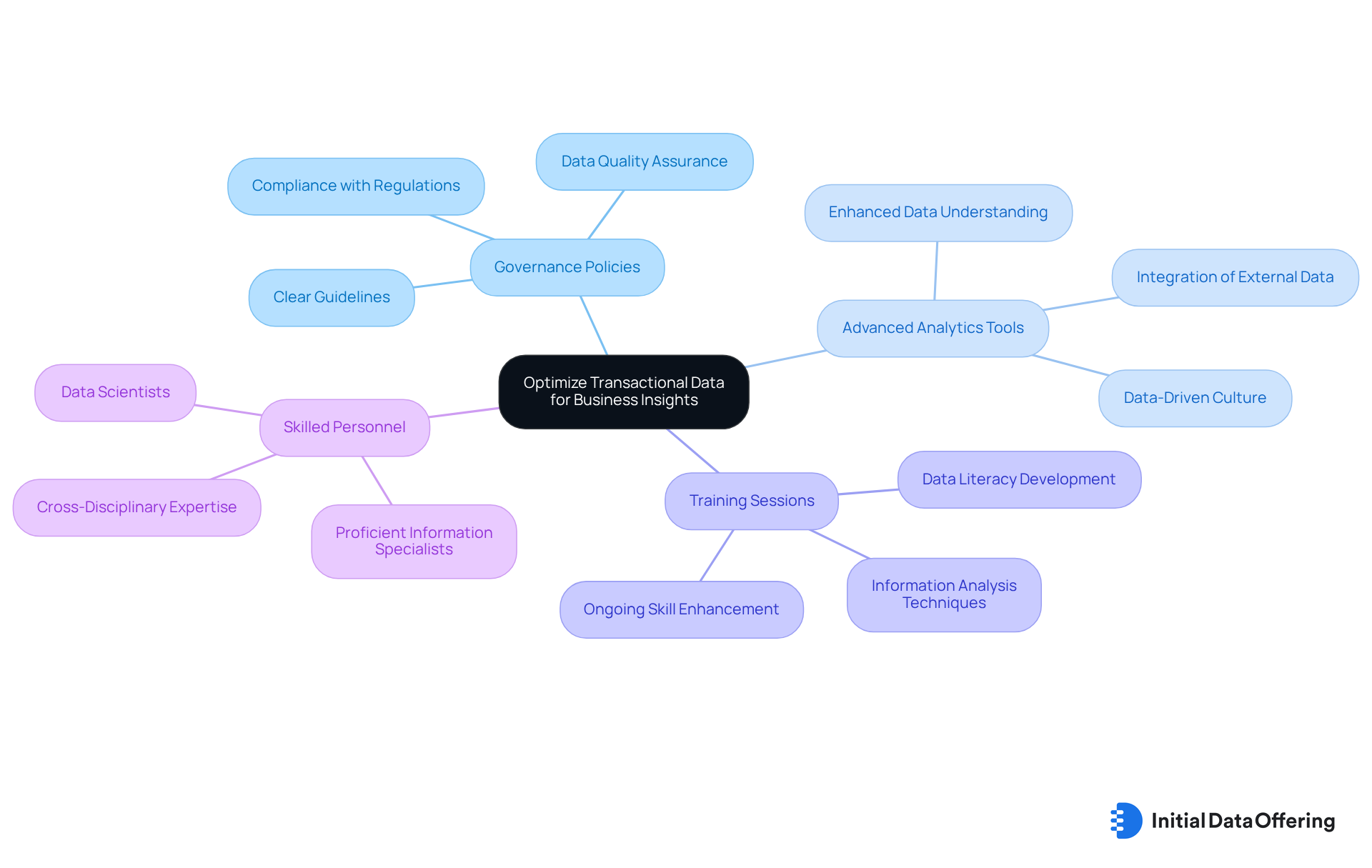
Customer Service Enhancement: Utilize Transactional Data to Improve Client Interactions
Transactional data serves as a vital asset for enhancing customer service by enabling businesses to analyze purchase histories and customer interactions. This analysis allows for the creation of personalized recommendations tailored to individual client needs, significantly improving customer satisfaction and loyalty. For instance, companies leveraging insights from past purchases have reported increased sales and a more favorable brand perception. Indeed, 80% of consumers are more inclined to buy from brands that provide customized experiences, emphasizing the significance of using customer information effectively.
Moreover, companies that utilize tailored suggestions based on transactional data can observe a significant effect on customer satisfaction. Research shows that customized experiences can result in a 33% greater lifetime value for clients. Additionally, 60% of consumers are more likely to become repeat buyers after a personalized shopping experience. By prioritizing these insights, organizations can foster deeper connections with their clients, ultimately driving growth and enhancing their market position.
As noted by a customer experience specialist, "Companies like Amazon have successfully utilized their recommendation engine to enhance customer experience and drive sales, demonstrating the power of personalized interactions." The trend towards personalization is evident, with 74% of eCommerce companies implementing website personalization programs. By embracing these strategies, businesses can ensure they remain competitive in a rapidly evolving market.
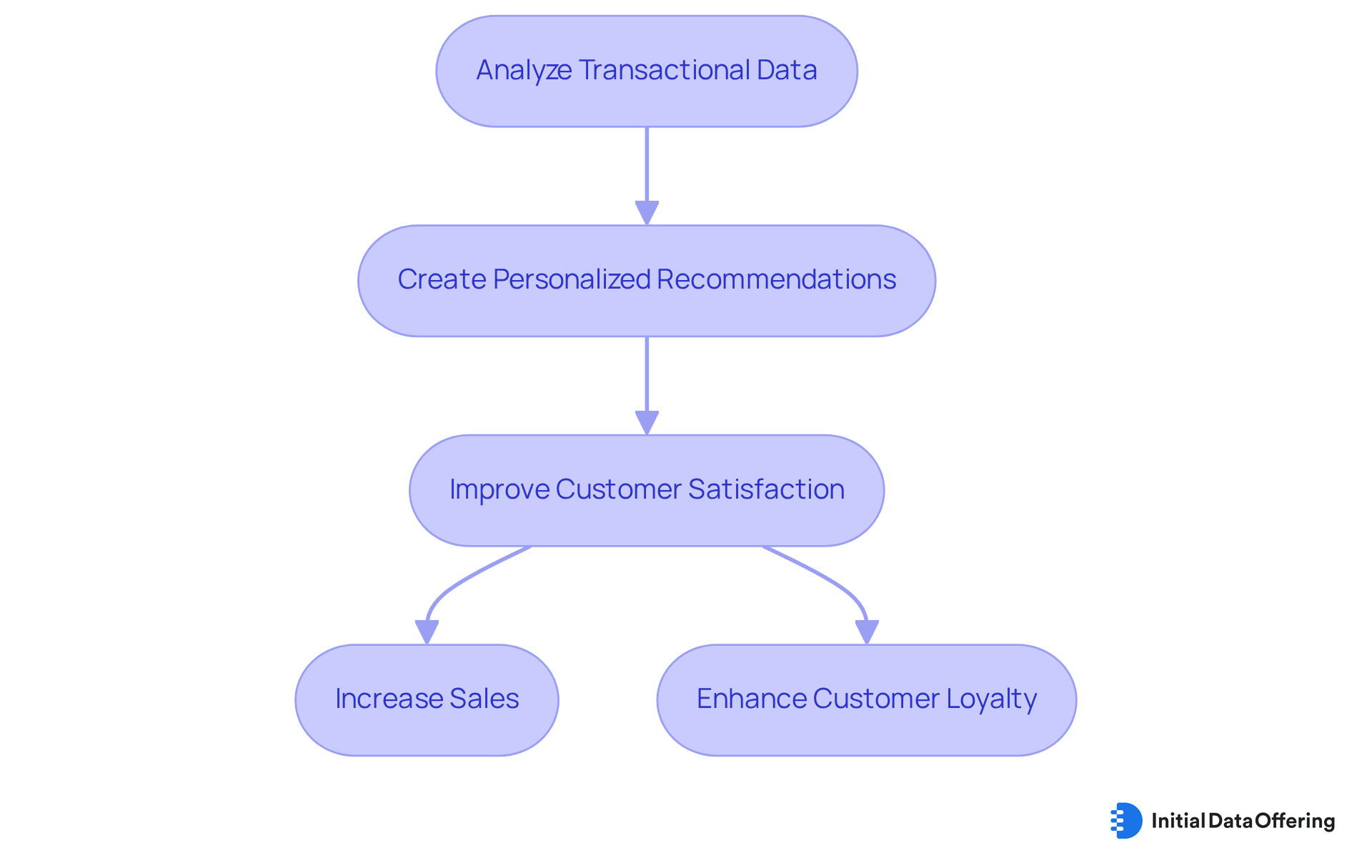
Data Privacy: Safeguard Transactional Data in Compliance with Regulations
Protecting transactional data is essential for adherence to regulations like GDPR and CCPA. Organizations must adopt comprehensive information protection measures, including:
- Encryption
- Access controls
- Regular audits
to secure customer details effectively. This focus on information privacy assists companies in avoiding possible legal consequences; non-compliance can result in an average penalty of $14.82 million. Moreover, it cultivates customer trust, which is crucial for sustained success. As consumer awareness of privacy rights increases, companies demonstrating a dedication to safeguarding personal information are more likely to establish enduring relationships with their customers.
Experts stress that handling privacy as a strategic advantage instead of merely a regulatory necessity can greatly improve a company's market standing. By establishing strong privacy frameworks, companies can manage the intricacies of changing regulations while guaranteeing that client information remains safe and private. Additionally, 95% of organizations claim that the advantages of investing in information privacy surpass expenses, strengthening the financial justification for compliance.
Routine audits are an essential element of these strategies, with 72% of companies utilizing compliance solutions for privacy law obligations. To remain competitive, companies should consistently evaluate and revise their privacy policies to comply with changing regulations. How prepared is your organization to adapt to these evolving standards? By prioritizing privacy, you not only protect your organization but also enhance your reputation in the marketplace.
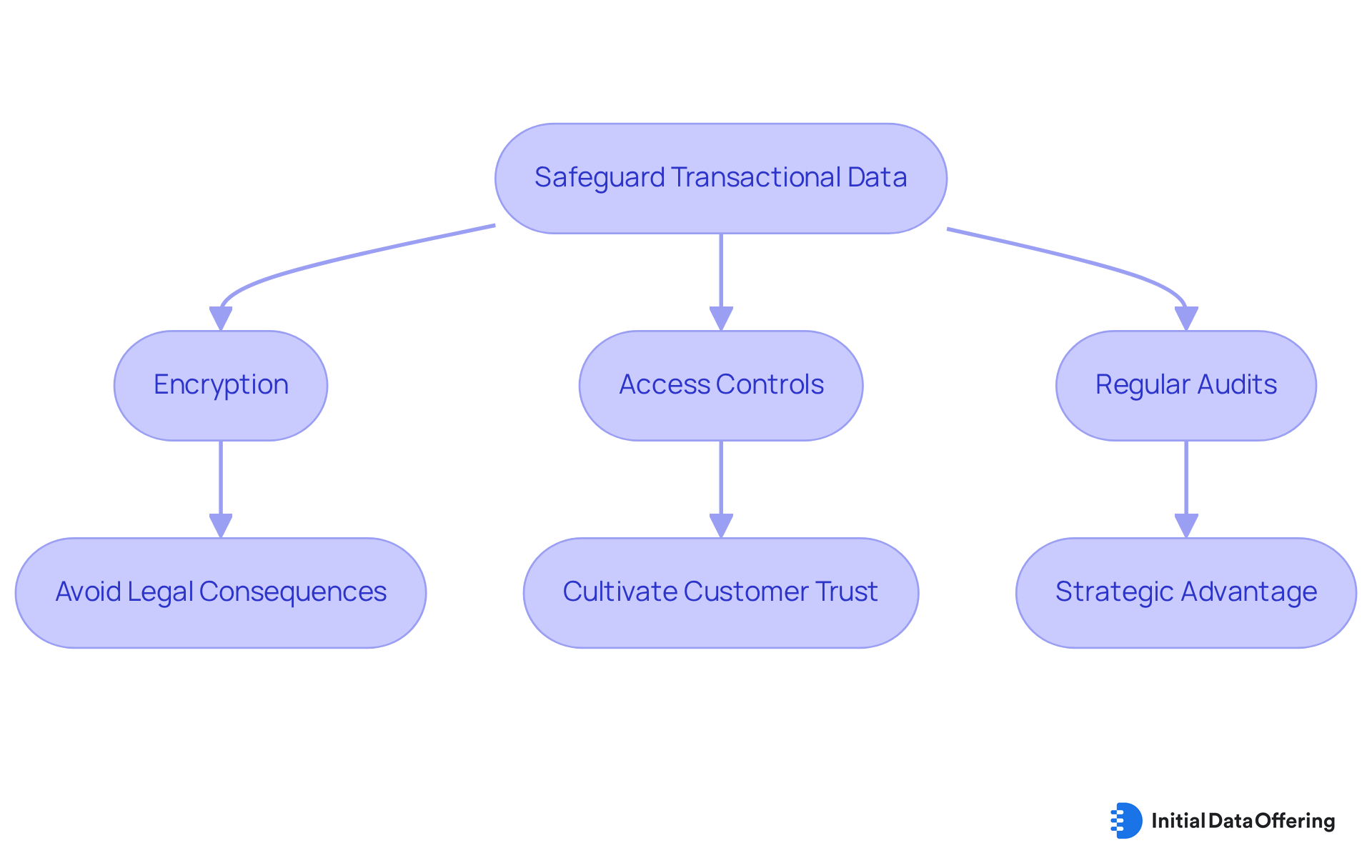
Growth Opportunities: Harness Transactional Data for Increased Profitability
Utilizing transactional data enables companies to recognize growth opportunities that significantly enhance profitability. By analyzing sales trends, customer preferences, market dynamics, and transactional data, organizations can make informed decisions about product offerings, pricing strategies, and marketing campaigns. This approach, driven by transactional data, not only boosts operational efficiency but also positions businesses for sustainable growth in an increasingly competitive landscape.
Consider this: 62% of retailers believe that information and analytics provide a competitive edge. This statistic highlights the importance of leveraging information in decision-making. Organizations that employ extensive analytics on transactional data have reported an 8% rise in profits and a 10% decrease in expenses, underscoring the tangible benefits of informed decision-making.
For instance, Corel Software has achieved remarkable success, with a 106% revenue increase attributed to targeted retargeting campaigns based on customer behavior analysis. Similarly, Haleon's analytics group improved their data management processes, leading to practical conclusions and enhanced profitability. Such insights emphasize the critical role of transactional data in shaping profitability strategies and uncovering new market opportunities.
The types of datasets available through Initial Data Offering, including Alternative Data and ESG Data, further illustrate the resources that can be harnessed for effective profitability strategies. How might these datasets apply to your organization? By understanding and utilizing these insights, businesses can strategically navigate their market landscape and drive growth.
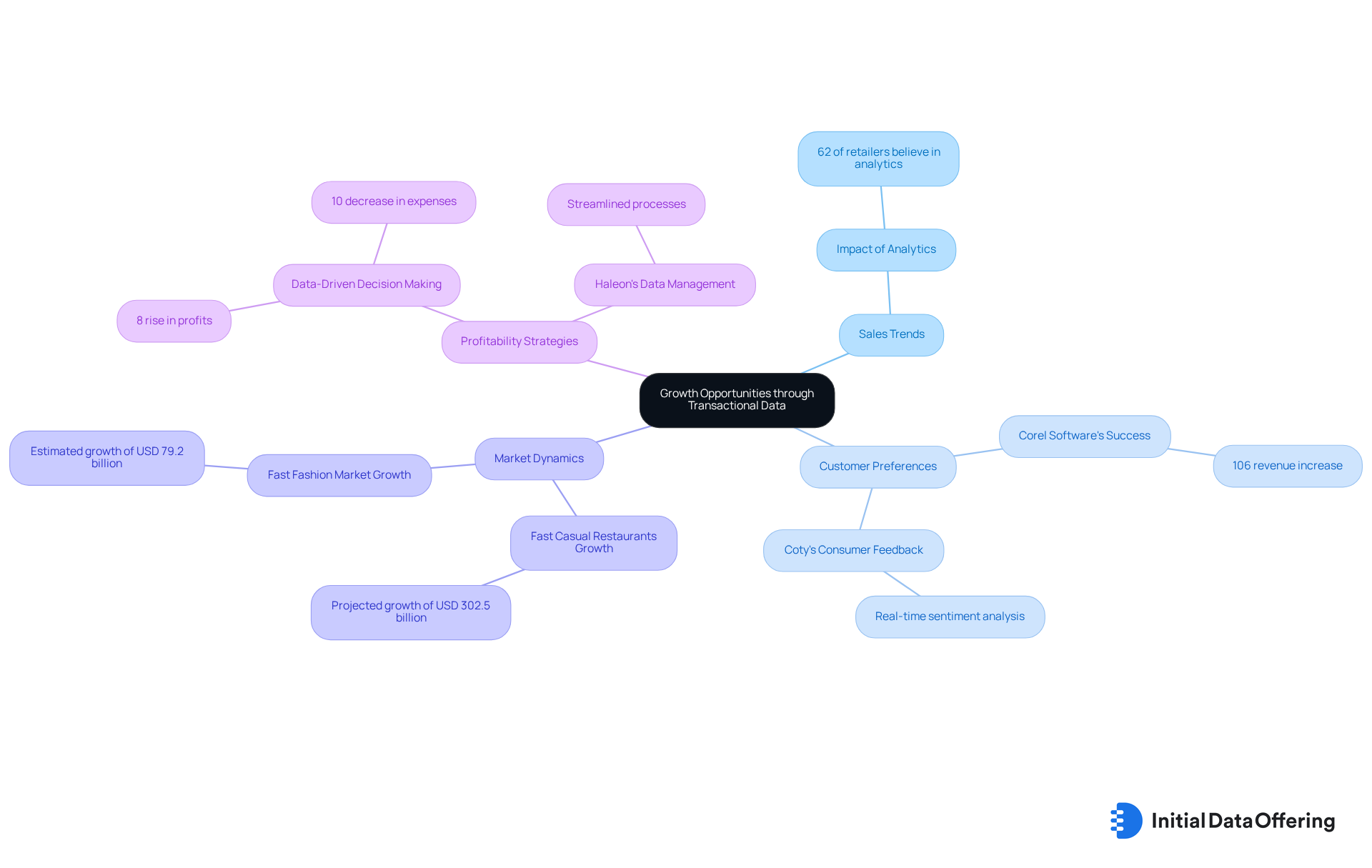
Conclusion
Harnessing transactional data is essential for businesses aiming to gain market insights and drive growth. By leveraging high-quality data, organizations can make informed decisions that enhance their competitive edge, adapt to consumer behavior, and optimize operations across various sectors. This article has explored the multifaceted role of transactional data, from ensuring data integrity through ACID properties to utilizing advanced analytics for trend analysis and customer service enhancement.
Key insights include:
- The necessity of robust data management practices to overcome accuracy and reliability challenges.
- The importance of transaction rollback and commit processes for maintaining consistency is paramount.
- The diverse applications of transactional data span industries such as finance, retail, and healthcare.
- The strategic advantage of prioritizing data privacy and compliance to foster customer trust and safeguard sensitive information.
In a rapidly evolving market landscape, organizations must recognize the transformative potential of transactional data. By embracing best practices for data governance and investing in advanced analytics, businesses can unlock growth opportunities that not only improve profitability but also enhance customer satisfaction. The proactive utilization of transactional data stands as a cornerstone for sustainable success, driving innovation and positioning companies for future challenges.
Frequently Asked Questions
What is the Initial Data Offering (IDO)?
The Initial Data Offering (IDO) provides enterprises with access to high-quality transactional data, enabling thorough analyses that inform strategic decisions and enhance market positioning.
How does IDO enhance decision-making for organizations?
IDO emphasizes the importance of high-quality information, allowing organizations to rely on accurate insights for anticipating consumer behavior, refining marketing strategies, and achieving sustainable growth.
What role does AI play in leveraging transactional data?
AI-driven solutions, such as SavvyIQ's Recursive Data Engine, help companies derive deeper insights from consumer transactional data, improving strategic initiatives and fostering informed decision-making.
What are ACID properties in transactional systems?
ACID properties stand for Atomicity, Consistency, Isolation, and Durability, which ensure that transactional data is processed reliably and maintains integrity within databases.
Why is ACID compliance important for businesses?
ACID compliance enhances decision-making processes by ensuring that all related transactional data actions occur together, maintaining precise information crucial for strategic planning and operational efficiency.
How do ACID properties prevent data corruption?
ACID properties ensure that even in cases of errors or system failures, transactional data remains stable and consistent, preventing corruption that could lead to costly mistakes.
How can trend analysis using transactional data benefit companies?
Trend analysis helps organizations uncover consumer behavior patterns, allowing them to adapt offerings, improve inventory management, and enhance marketing strategies, ultimately increasing customer satisfaction.
What impact does data-driven strategy have on ROI?
Businesses that utilize data-driven strategies can achieve five to eight times more ROI compared to those that do not, highlighting the effectiveness of leveraging transactional data insights.
How can organizations utilize insights from transactional data?
Organizations can use insights from transactional data to meet consumer demands, adapt to market trends, and foster long-term customer loyalty through informed strategies.